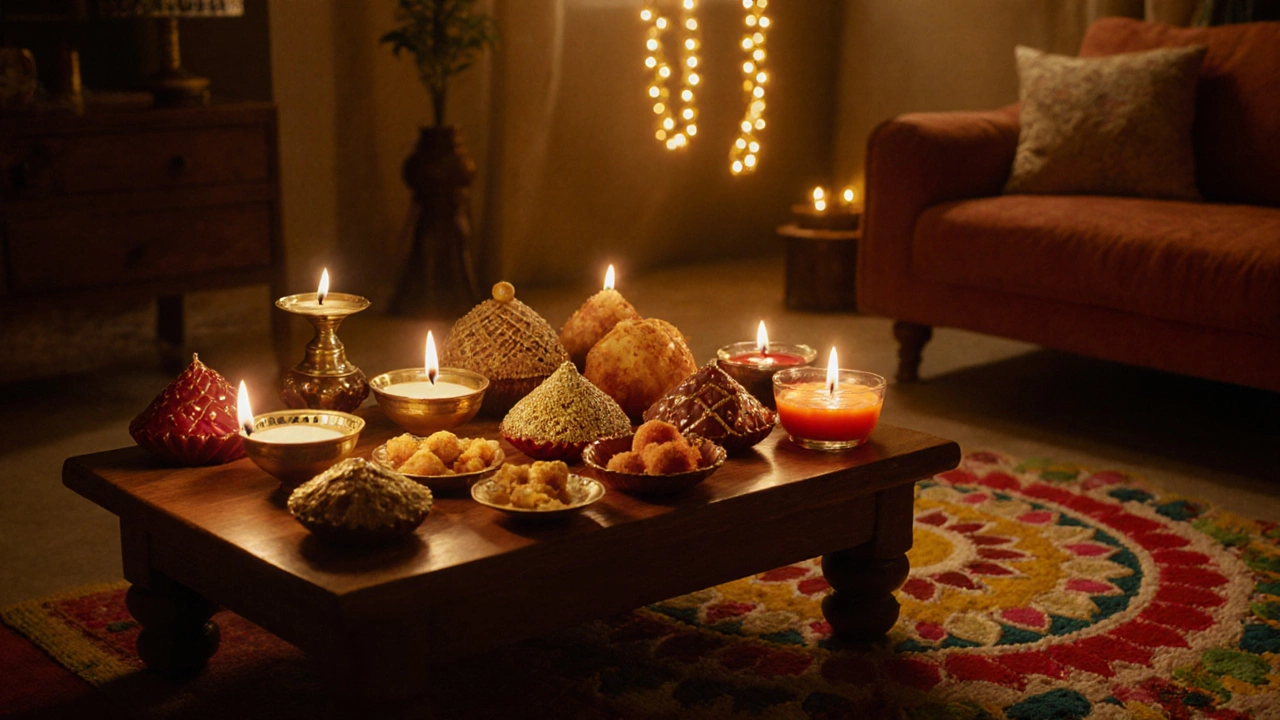
Why are sweets given during Diwali? Meaning and Traditions Explained
Discover the cultural and religious reasons behind gifting sweets on Diwali, explore regional treats, and learn tips for sharing the perfect festive sweets.
When you think of Diwali sweets tradition, a centuries-old custom of preparing and sharing sweet foods during the Festival of Lights, you might picture ladoos, jalebis, or barfis. But this isn’t just about dessert—it’s about memory, identity, and connection. Every bite carries meaning: the crunch of sesame seeds in til laddoo, the warmth of ghee in mysore pak, the slow simmer of sugar syrup that turns into something sacred. In Tamil homes, this tradition blends with Karthigai Deepam, where sweets like adhirasam and panchamirtham aren’t just snacks—they’re offerings, blessings, and acts of love passed down through generations.
The Diwali sweets tradition, a practice rooted in Hindu rituals of abundance and gratitude isn’t the same everywhere. In North India, it’s all about creamy, syrup-soaked treats. In Tamil Nadu, it’s about fermented rice dough fried in ghee, or a five-ingredient pudding made with banana, jaggery, and honey—ingredients that say more about local harvests than imported sugar. These aren’t random recipes. They’re tied to seasons, temple rituals, and even astrological timing. You don’t just eat these sweets—you honor them. And that’s why families wake up at dawn to make them, even when they’re tired, even when it’s easier to buy them from a shop.
There’s a reason these sweets show up in every Diwali story, every family photo, every temple offering. They’re the glue. When a grandmother teaches her granddaughter how to roll the perfect ladoo, she’s not teaching cooking—she’s teaching belonging. The Tamil Diwali customs, which merge regional food practices with spiritual symbolism remind us that celebration isn’t about scale—it’s about intention. Whether it’s a simple piece of jaggery wrapped in coconut or a layered barfi dusted with cardamom, each sweet carries a story. And in a world that’s rushing forward, these traditions hold still.
What you’ll find below are real stories from real kitchens—how a Tamil family in Chennai makes adhirasam the same way their great-grandmother did, how a Gujarati friend learned to love mysore pak during Diwali visits, and why some households still refuse to use electric mixers for their sweets. These aren’t just recipes. They’re living history, served on banana leaves and shared with neighbors, strangers, and gods alike.

Discover the cultural and religious reasons behind gifting sweets on Diwali, explore regional treats, and learn tips for sharing the perfect festive sweets.